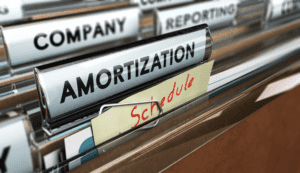
Founded in 1993, The Motley Fool is a financial services company dedicated to making the world smarter, happier, and richer. The Motley Fool reaches millions of people every month through our premium investing solutions, free guidance and market analysis on Fool.com, top-rated podcasts, and non-profit The Motley Fool Foundation. Investment analysts and accountants use the PP&E of a company to determine if it is on a sound financial footing and utilizing funds in the most efficient and effective manner. Despite the fact that upgrades might be costly, they are nevertheless regarded an asset to a company since they constitute an additional investment in ensuring the company’s success. This is crucial to consider when buying land for a business since it might mean the difference between a long-term profit or loss.
Recording of Plant Assets In Financial Statements
In this lesson, we’ll look at examples of plant assets, as well how accounting for them requires special attention. The physical property where a business’s operations are located is one of the most important parts of plant assets. When a company owns its own land on which they conduct business, they do not need to pay a third party for space to rent or do not need to ask permissions from a landlord to perform a certain action. Typically, land is one of the most valuable plant assets because it is highly appreciating. Land rarely depreciates in value so businesses purchasing land hold tremendous value. Construction sites are also plant assets because a construction site still has value and will contribute to profits.
Balance Sheet

Some assets are primarily used in a business to focus on generating revenue. These assets help the company bring in money to fund other operations and to maintain profits. We should be wary of any indications of impairment such as a downturn in business which suggests that the plant assets may not be able to generate as much value as they could before. Its accounting definition could be identified in IAS 16 Property, Plant and Equipment. IAS 16 defines them as physical assets that are used to produce revenue or for administrative purposes and are expected to be in use for more than one accounting period.
Calculating PP&E
By following a systematic acquisition process, businesses can ensure that they acquire the necessary plant assets to support their operations efficiently and effectively. This would include long term assets such as buildings and equipment used by a company. Buildings are assets that include any structure or facility that a business builds or owns on their property. Buildings are typically one of the most valuable assets of a company in addition to owned land. A business might own small buildings like office space or a small storefront, or larger structures such as storage facilities, warehouses, or large headquarters for their employees. In actual practice, it is not only difficult but impractical to identify how much of the plant assets have actually been used to produce business revenue.
- Accounting definition Companies sometimes sell a portion of their assets to raise cash and boost their profit or net income.
- Typically, land is one of the most valuable plant assets because it is highly appreciating.
- The importance of differentiating plant assets over other assets is for accounting practices, in particular for tax reporting and financial planning.
- Proper depreciation accounting is essential for financial reporting, decision-making, and accurately assessing a company’s overall profitability and asset values.
- In this article, we’ve explained the concept of plant assets in very detail.
Examples of Plant Assets
Named during the industrial revolution, plant assets are no longer limited to factory or manufacturing equipment but also include any asset used in revenue production. Accurate reporting of plant assets in financial statements is crucial for assessing a company’s financial https://www.bookstime.com/ health, evaluating its asset utilization, and determining its ability to generate future cash flows. It provides transparency and accountability to stakeholders and assists in making informed decisions regarding investments, lending, and overall business operations.
- It is interesting to note that IAS 16 has pointed out that a plant asset purchased for safety or environmental reasons could qualify as a plant asset even if it does not contribute to revenue.
- If you picture a business as a process that creates wealth for the owners, PP&E are the physical machine.
- The company also has a printing press for printing customized merchandise with brand designs.
- The goods you can include in this category are usually useful assets that help your business well.
- PP&E assets are long-term investments for a business that have a long lifetime compared to other types of assets.
- These assets are used for operating the business functions and generating revenues in the financial periods.
The disposal of plant assets requires consideration of market value, decision-making, and appropriate accounting treatment. The acquisition of plant assets involves careful planning, research, and evaluation to ensure the assets meet plant assets are defined as the company’s needs and provide value for the investment made. Proper recording and classification of plant assets in accounting documents their cost, useful life, and depreciation, showcasing their value in the financial statements.

Even if a company does not operate on-site or own property, many businesses profit from purchasing land, even if they do not intend to use it until later. Equipment is also quite valuable and crucial to the operation of any organization. It propels operations forward and allows a company to generate money on a consistent basis. Equipment is also one of the most varied forms of plant assets since it differs based on the industry or the specific demands of each company. As we continue to walk our way down the balance sheet, we come to noncurrent assets, the first and most significant of which is PP&E.
About The Motley Fool
They are written off against profits over their anticipated life by charging depreciation expenses (with exception of land assets). PP&E are vital to the long-term success of many companies, but they are capital intensive. Accounting definition Companies sometimes sell a portion of their assets to raise cash and boost their profit or net income. As a result, it’s important to monitor a company’s investments in PP&E and any sale of its fixed assets. Although PP&E are noncurrent assets or long-term assets, not all noncurrent assets are property, plant, and equipment.

